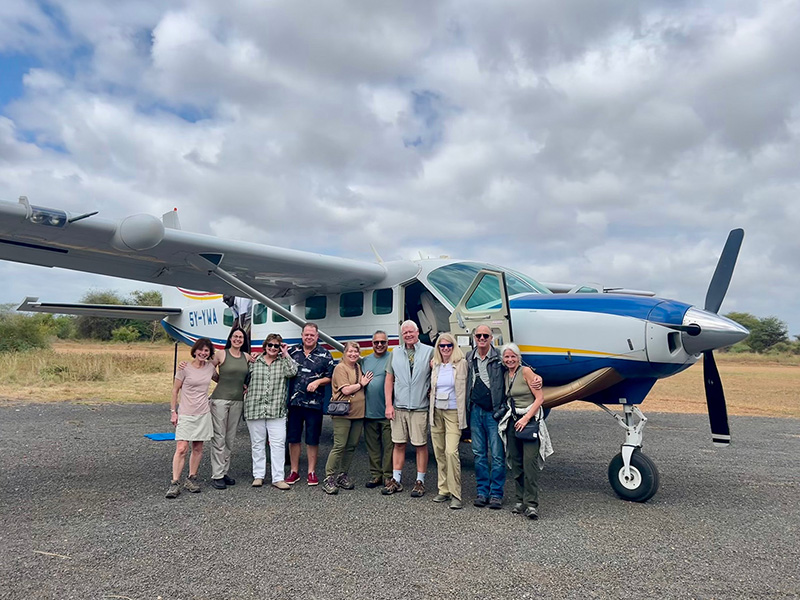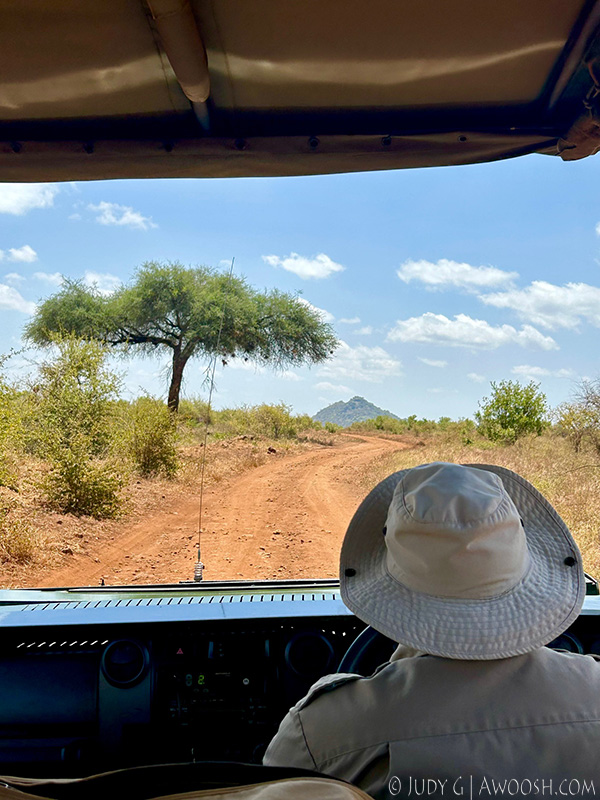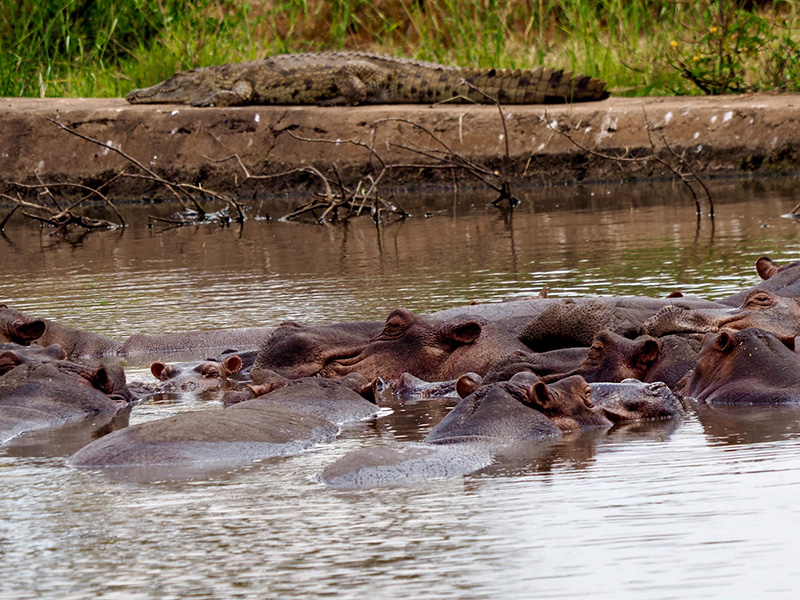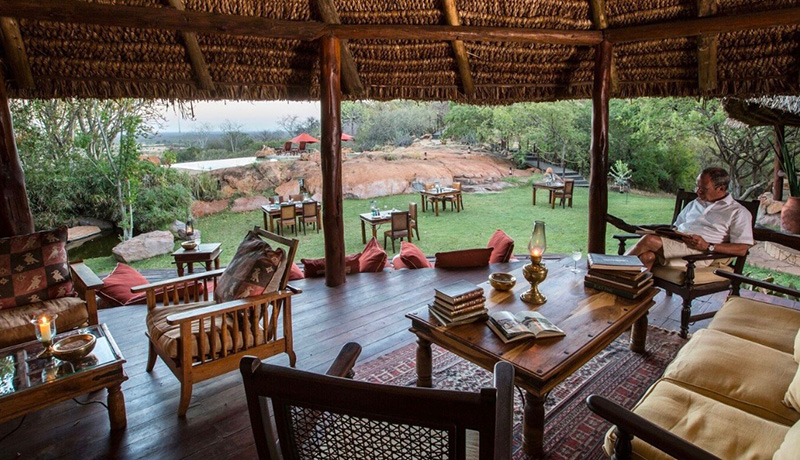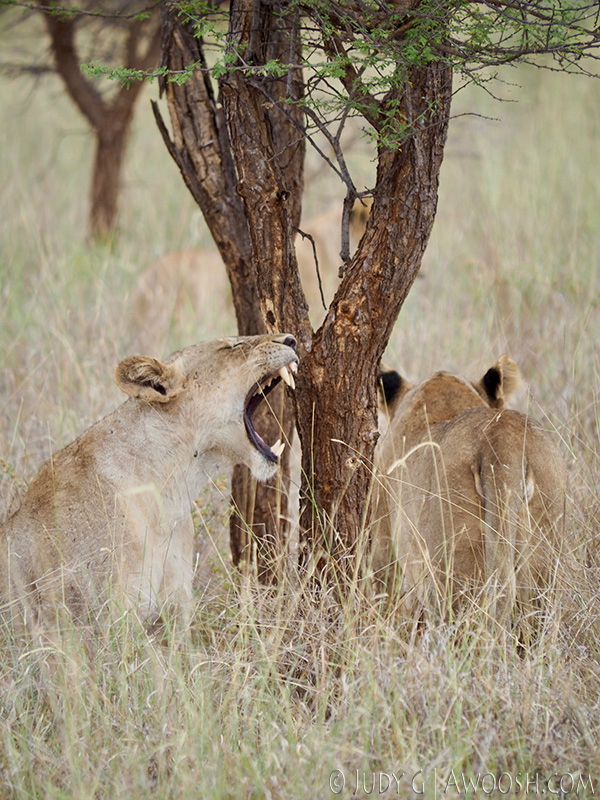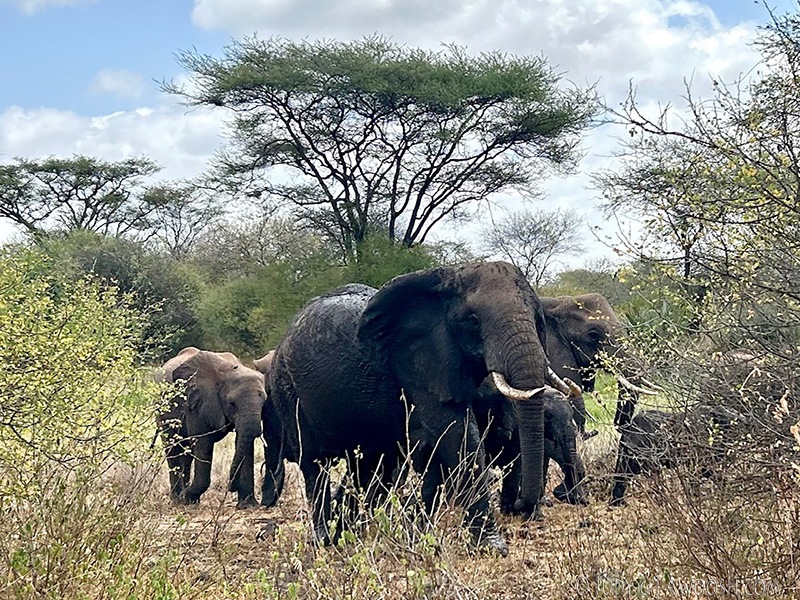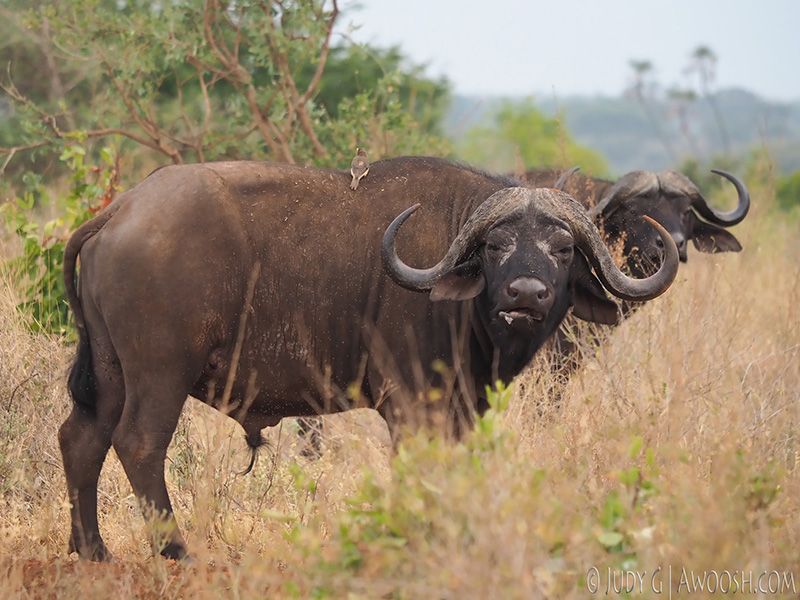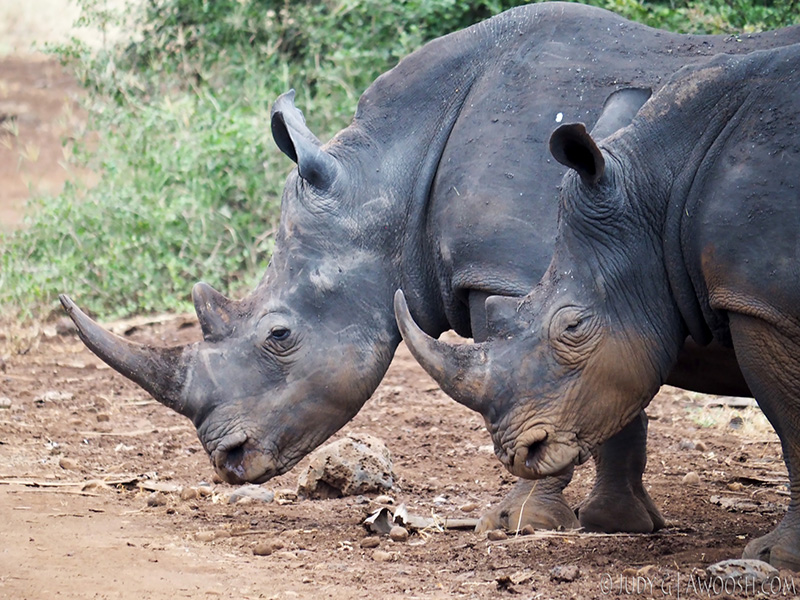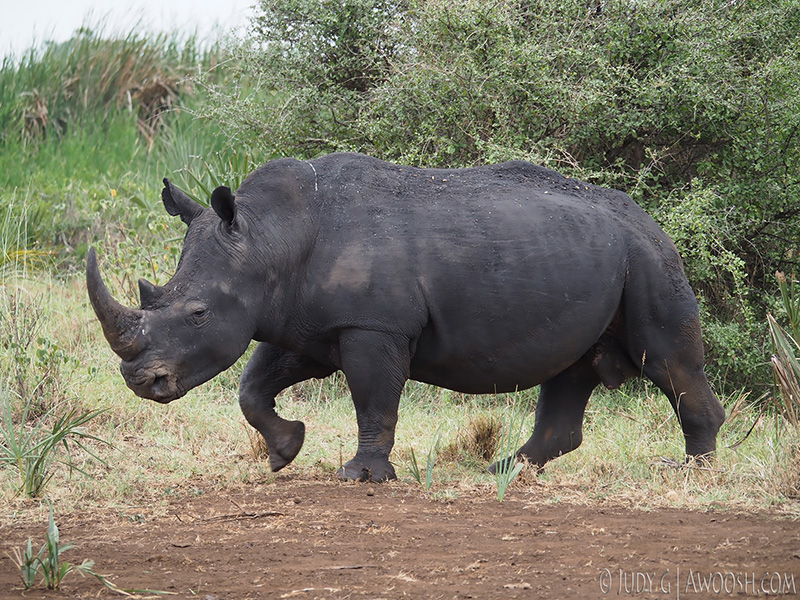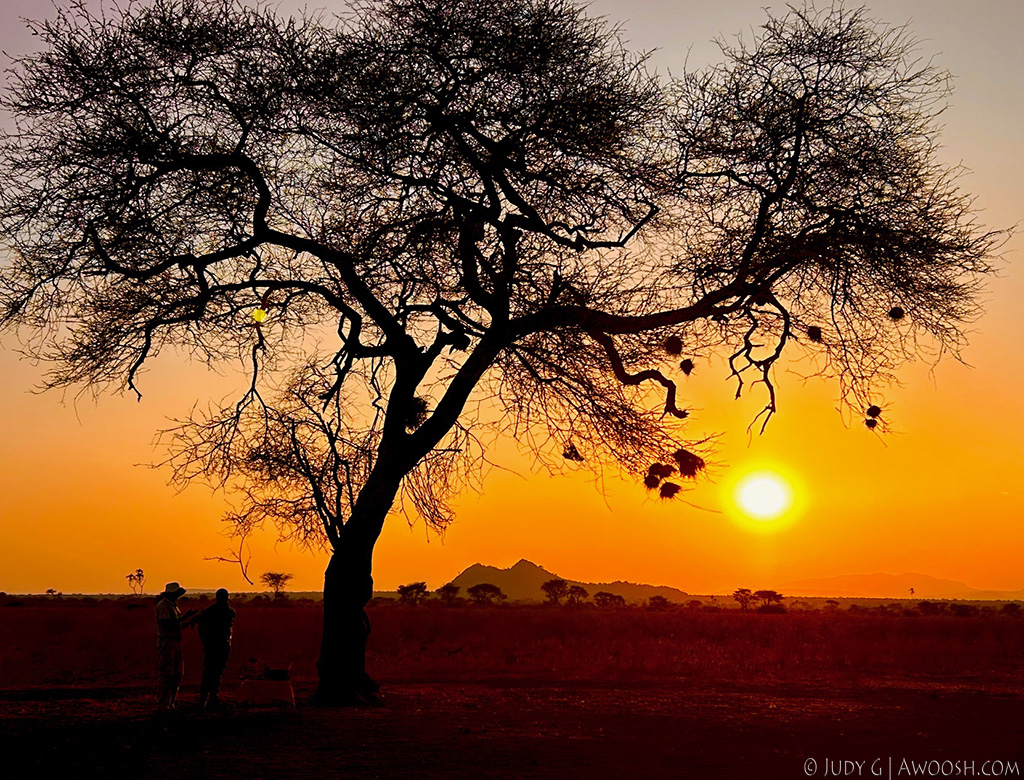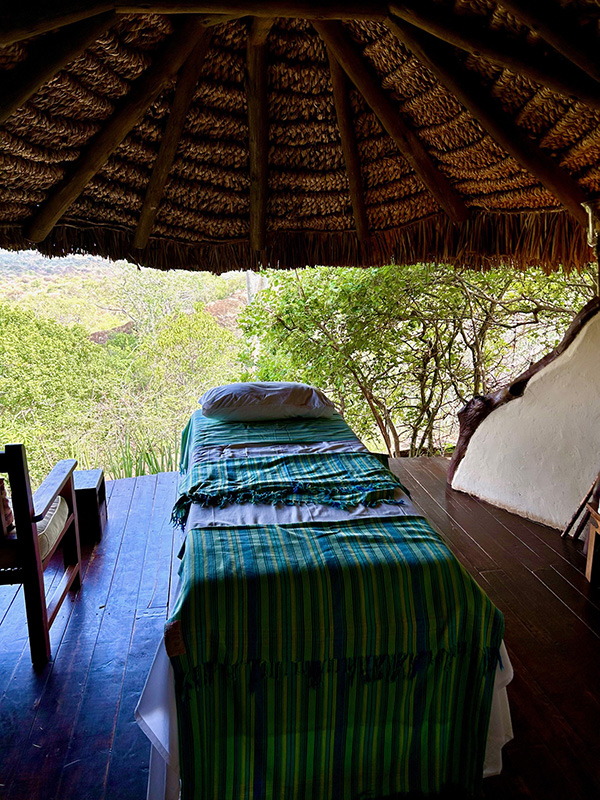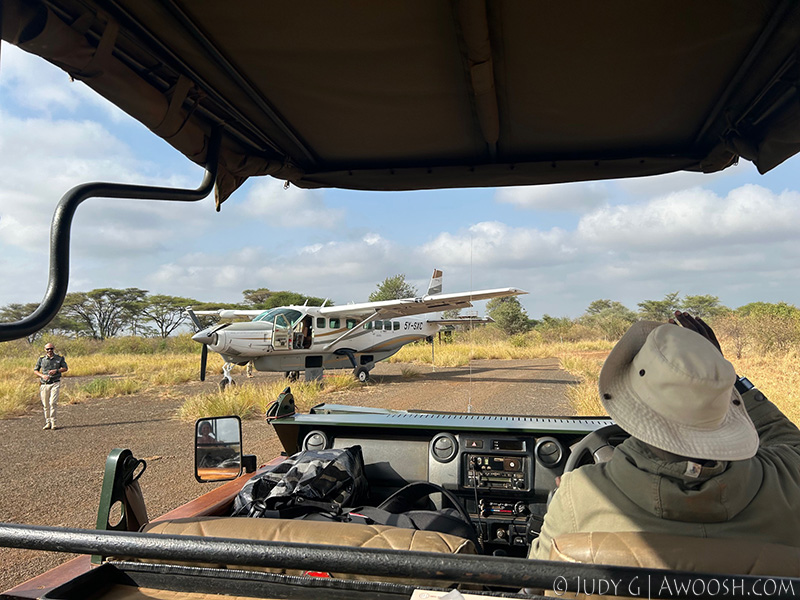Meru National Park – Elewana’s Elsa’s Kopje
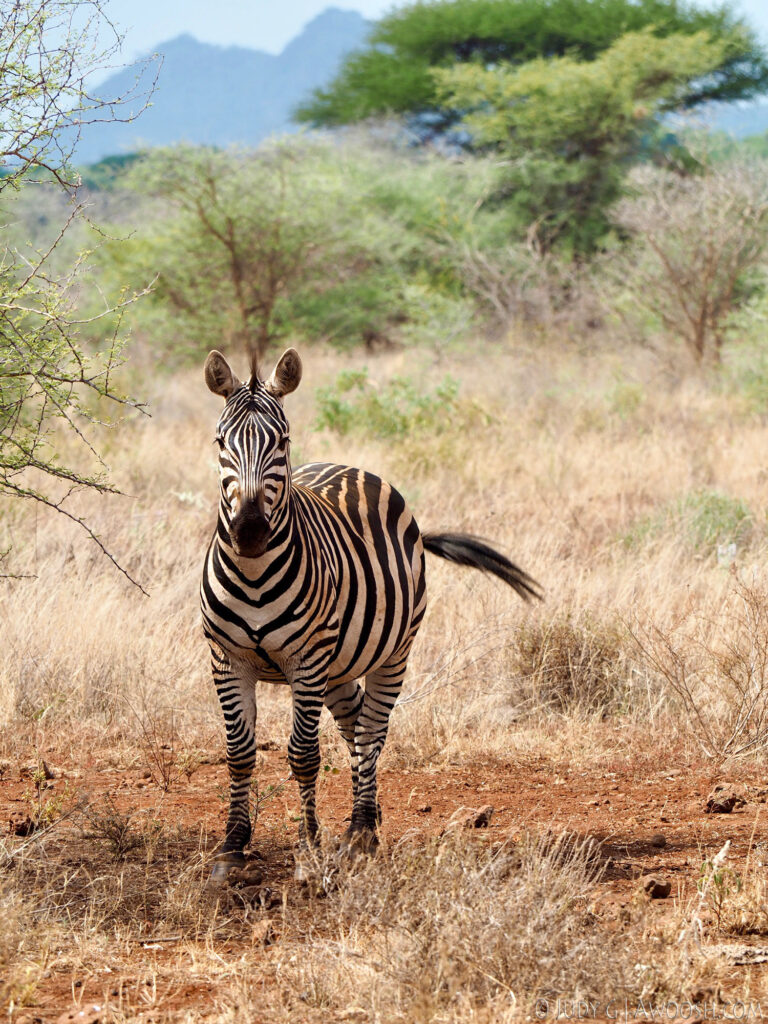
Our flight out to Meru National Park was from Wilson Airport, from which most small domestic flights depart in Nairobi. The plane was a single engine, 12 seater Cessna Grand Caravan, and quite comfortable for the ~45 minute flight to the bumpy, unpaved airstrip in the middle of nowheresville on which we landed.
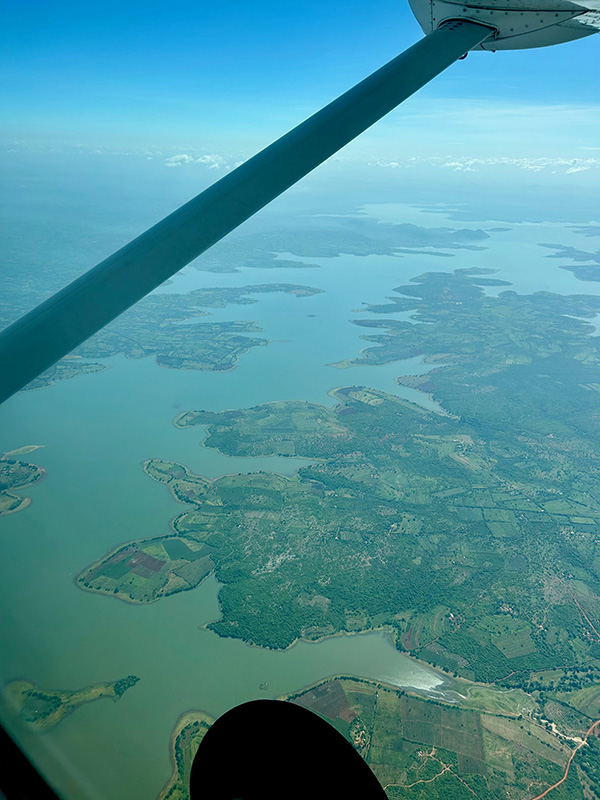
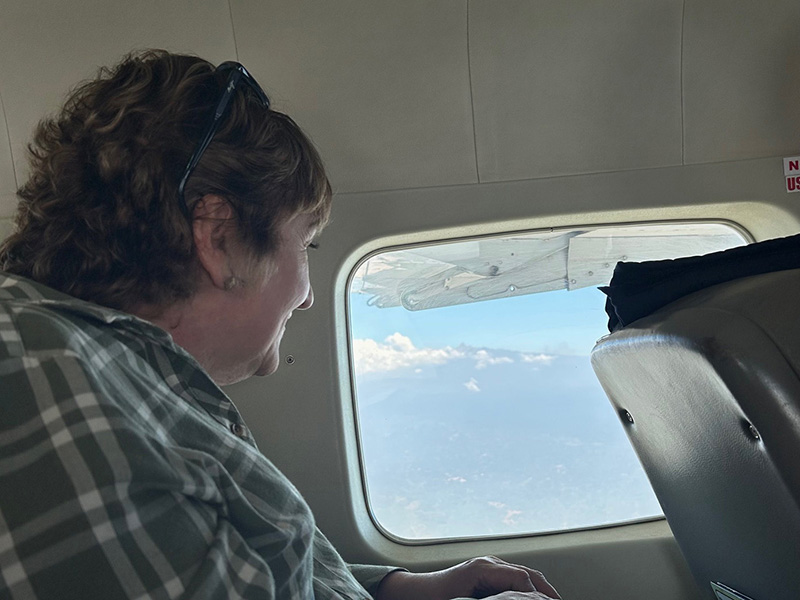
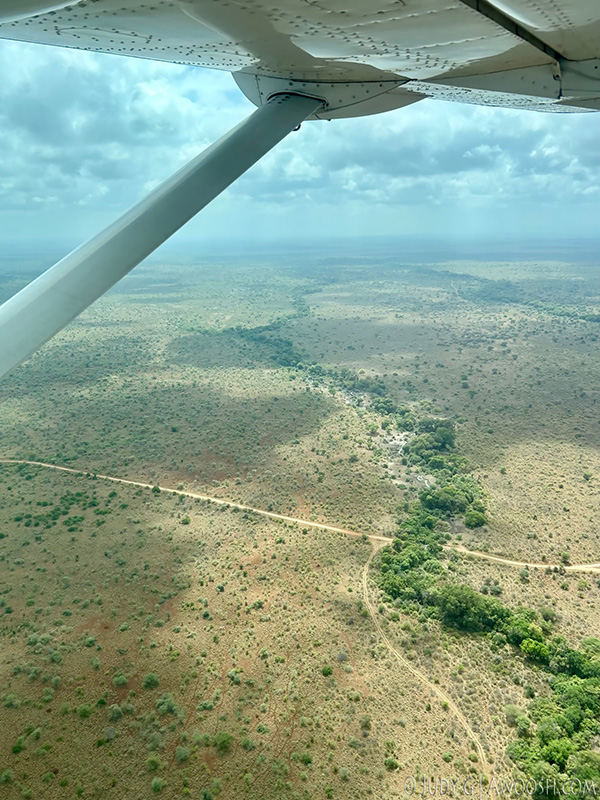
From there, we were met by two safari vehicles & drivers from Elsa’s Kopje, who offered us a cool towel and a cold drink, and then loaded up us and our stuff, and set out on what was to be a pretty awesome first Kenyan game drive between the air strip and the camp. Most of the folks on our trip had not been to Africa before, and it truly was a joy to see it through their eyes. Within five minutes they had seen several towering nearby giraffes, a parade of elephants, and a big raft of some stinky hippos lolling and farting in a muddy pond, with an crocodile perched malevolently on the bank just behind them. Oohs and ahs and many iPhone photo clicks ensued.
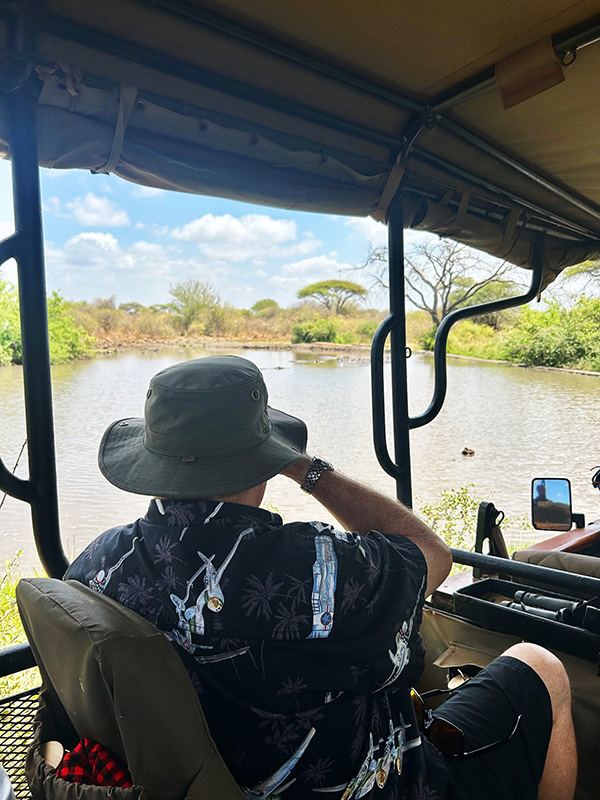
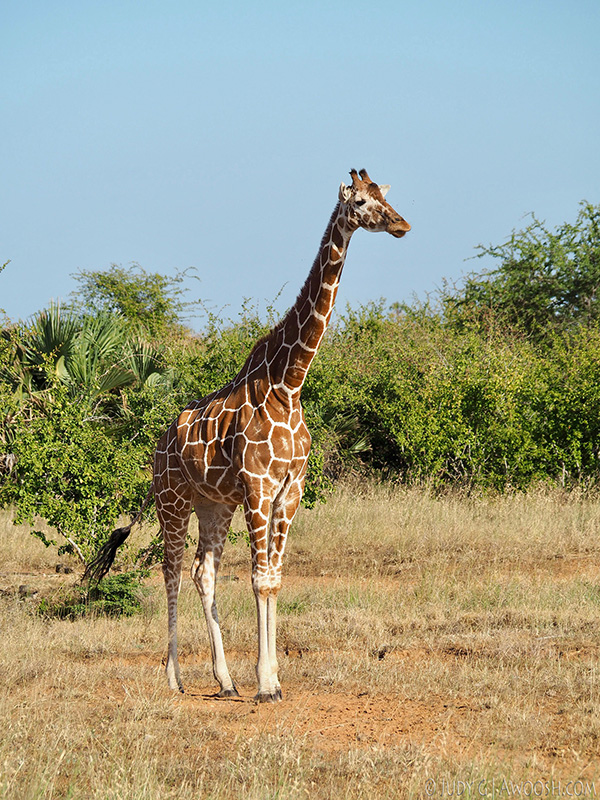
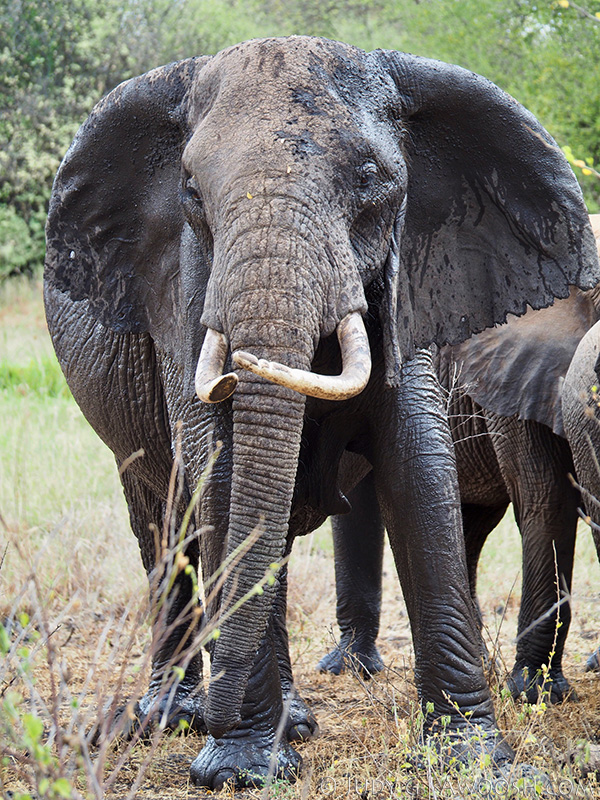
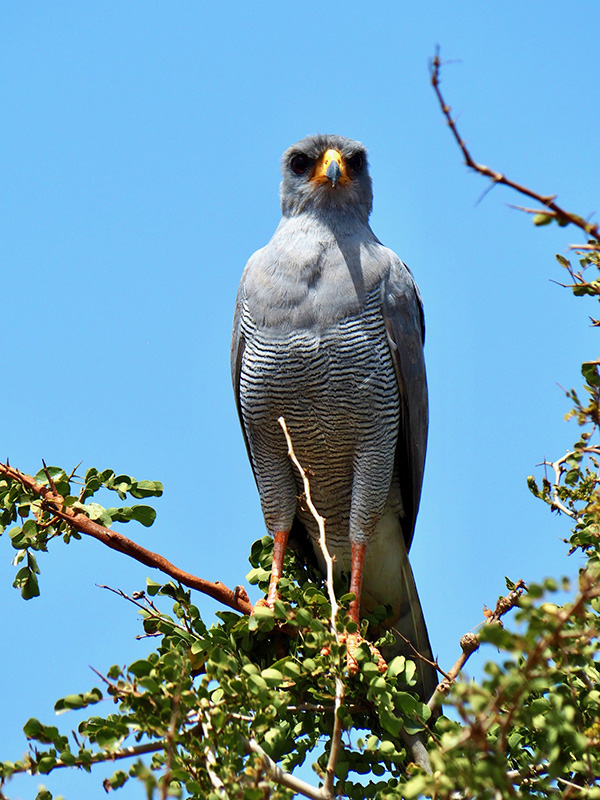
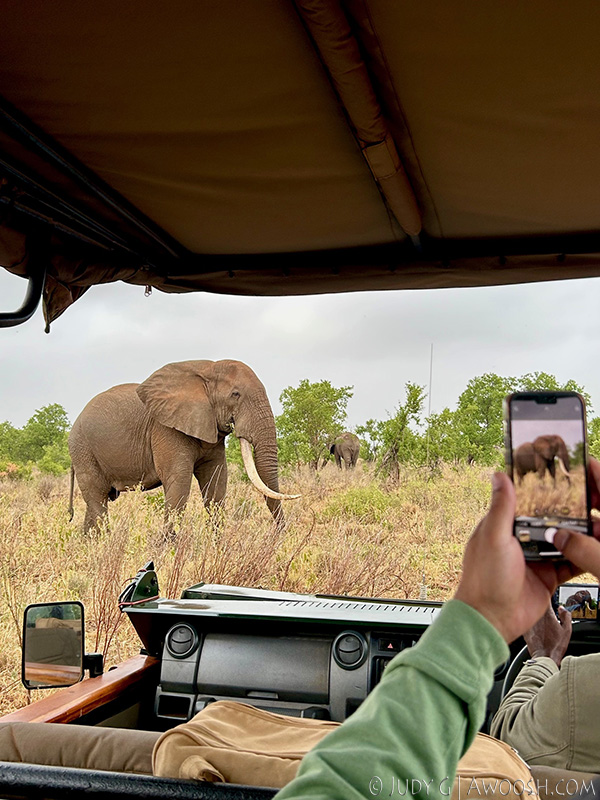
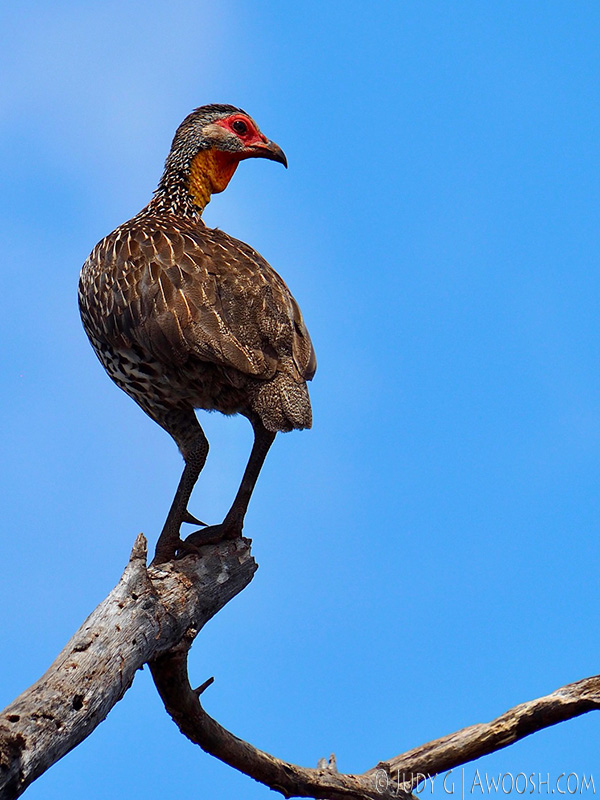
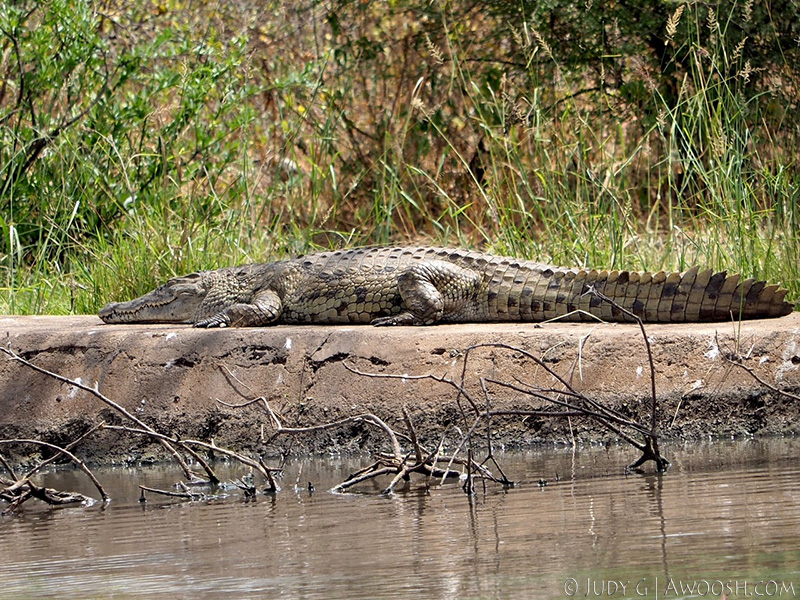
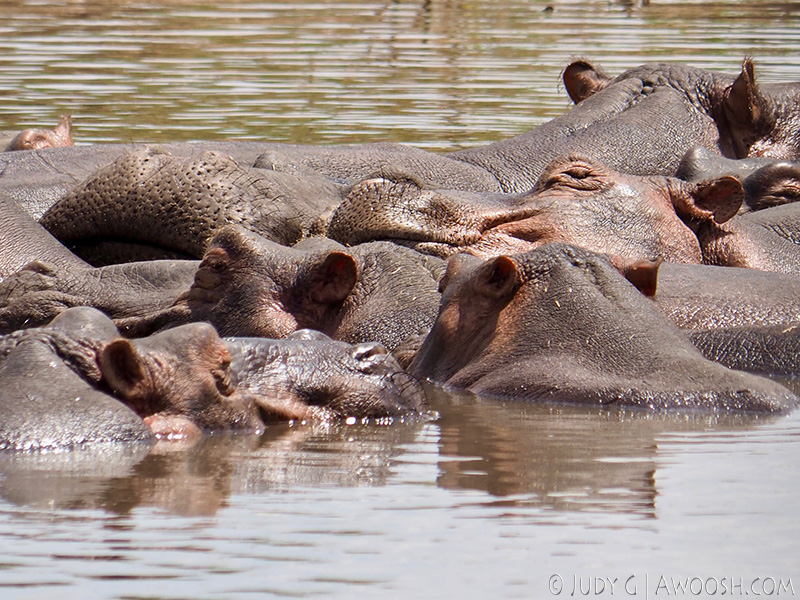
Elsa’s Kopje is the only permanent camp located within the 870 square kilometre (almost a quarter of a million acres) Meru National Park. As such, there is little to no competition with other vehicles when viewing the abundant wildlife in the area. The overall feel is super remote.
The camp itself is beautifully built on a stony peaked hill (kopje) that juts up out of the scrubby plain, and so is effectively a homing beacon that can be seen from almost anywhere in the park.
This area was made famous by Joy & George Adamson — they of the book and movie Born Free — which told the story of the couple who came to the area with a vision of working towards conservation of the animals, and who ended up raising orphaned Elsa the lion cub into adulthood, and then successfully releasing her back into the wild. The Adamsons separately came to tragic endings in Africa. Google is your friend ;^)
Elsa’s Kopje camp is currently under the management of Grace, a capable and articulate leader. Every person on the staff was ever helpful. Like at most camps in Africa (I think), they insist that guests be chaperoned to and from their cottages/tents during the dark hours. Hearing lions roaring in the night, the yelping of hyenas, barking of baboons and trumpeting of elephants makes it easy to understand why.
The camp has 6 cabins nestled on the rock, most cantilevered out, giving awesome views of the expansive plain below and then the mountains beyond, and as well there are a few multi-room family units, accessible across a white knuckling rope and board suspension bridge. Our cottage (#4) had a live tree growing right through it, and the feeling was very much that we were staying in a treehouse. The reception lodge has a gathering area, a small boutique, and management offices. The separate main lodge has a comfortable living area, large dining area, and bar, and looks out over a small lawn (where they set up tables to dine under the stars at night), with an infinity pool beyond. The whole place is charming, and rustically luxurious. It’s also an ‘eco resort’, providing power and hot water via solar arrays.
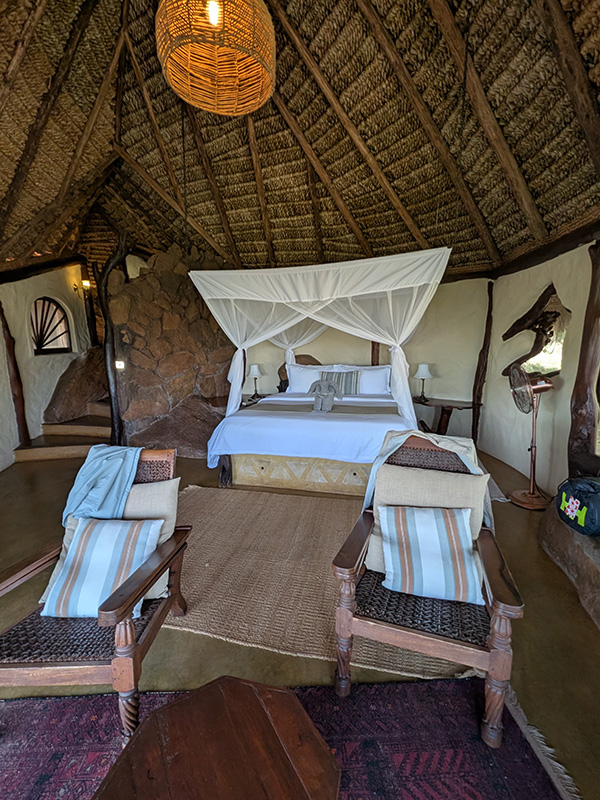
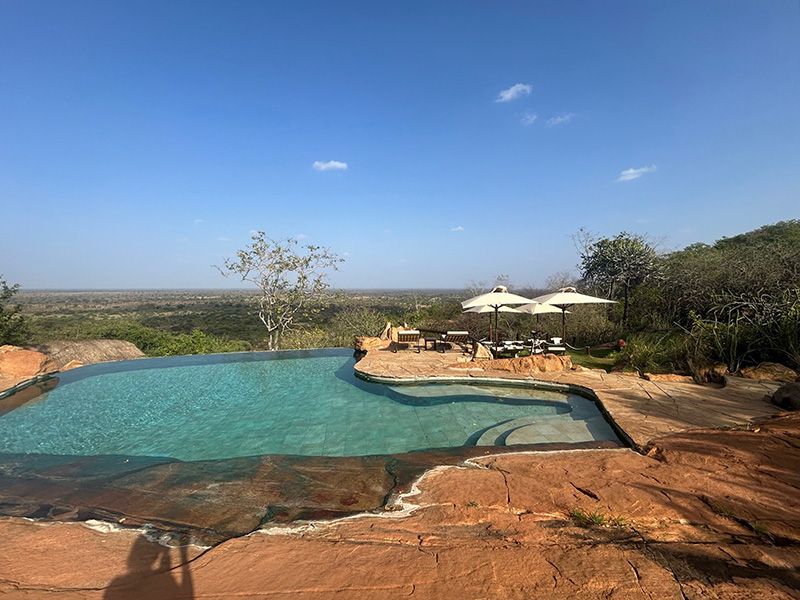
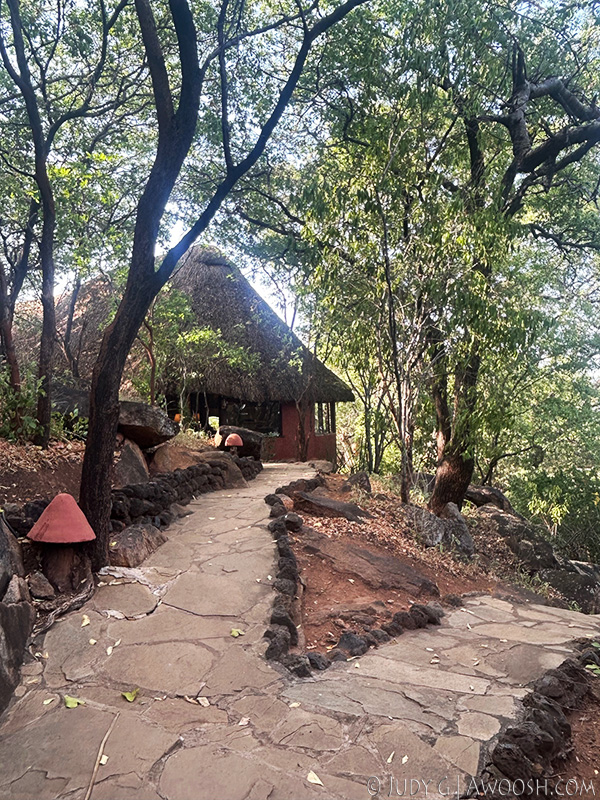
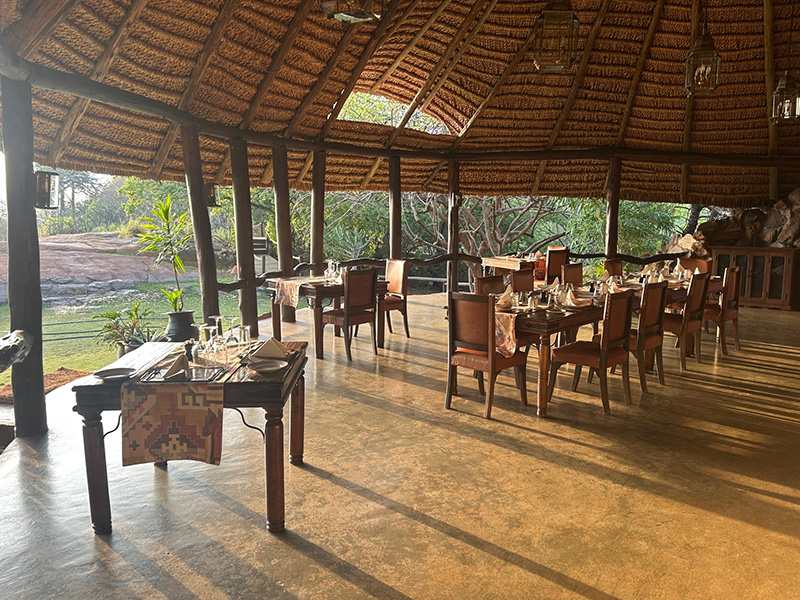
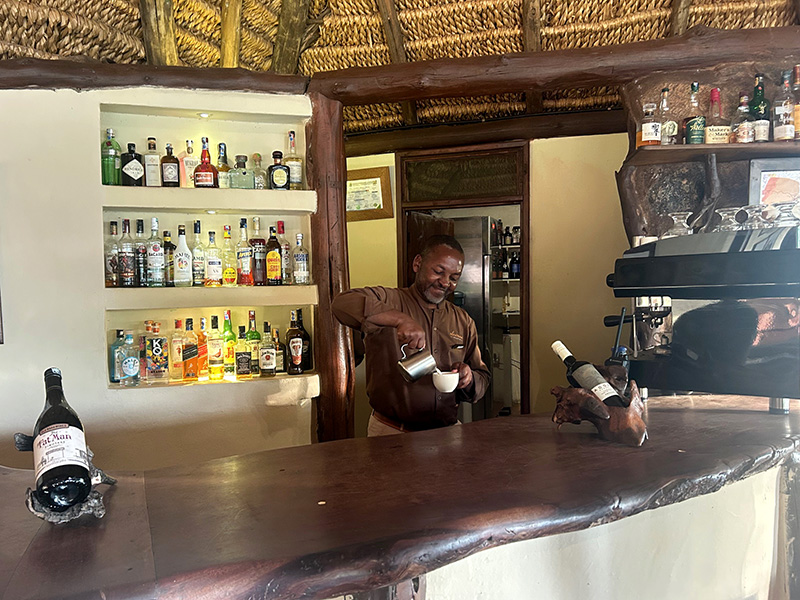
In our four days at Elsa’s we explored huge areas of the park, on the dusty and at times bumpy roads (aka Kenyan massage) that crisscross the mostly flat terrain, and travel across quite a few streams and small rivers as well.
We saw a lot of animals — elephants, lions, giraffes, cape buffalo, rhinos (in a special section of the park that has been fenced off to keep them in that area to try to inhibit poaching), lions, assorted African antelopes, hippos, baboons, zebras, and many varieties of birds.
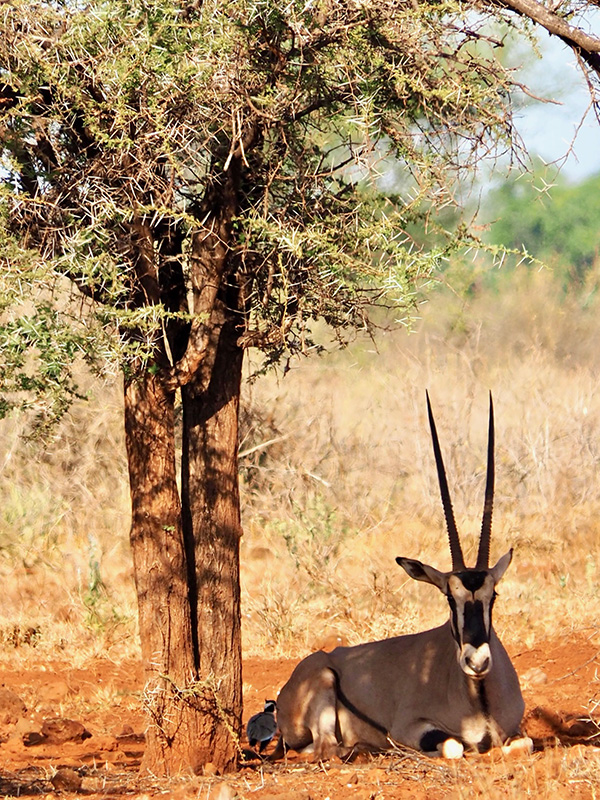
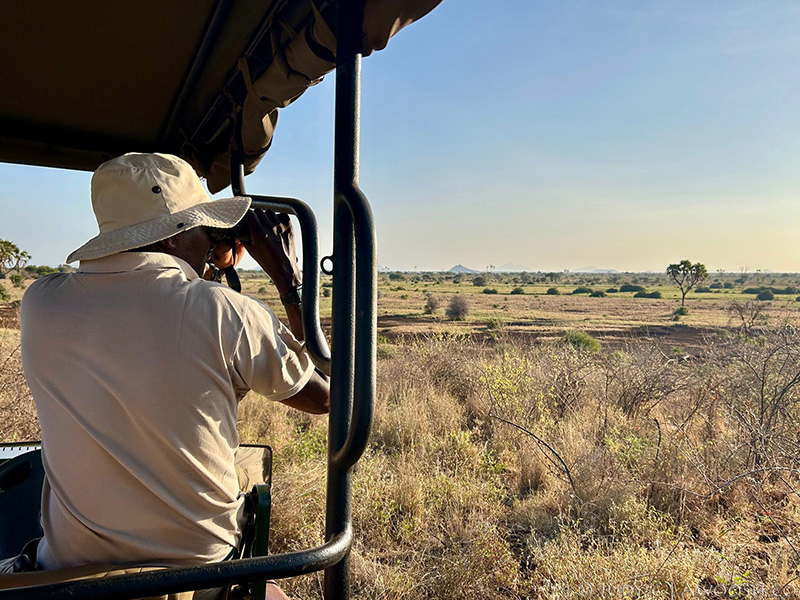
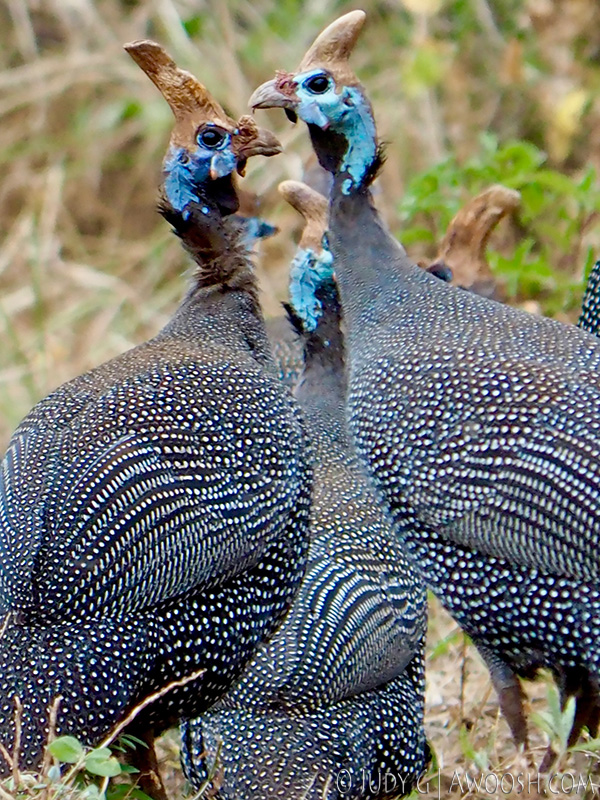
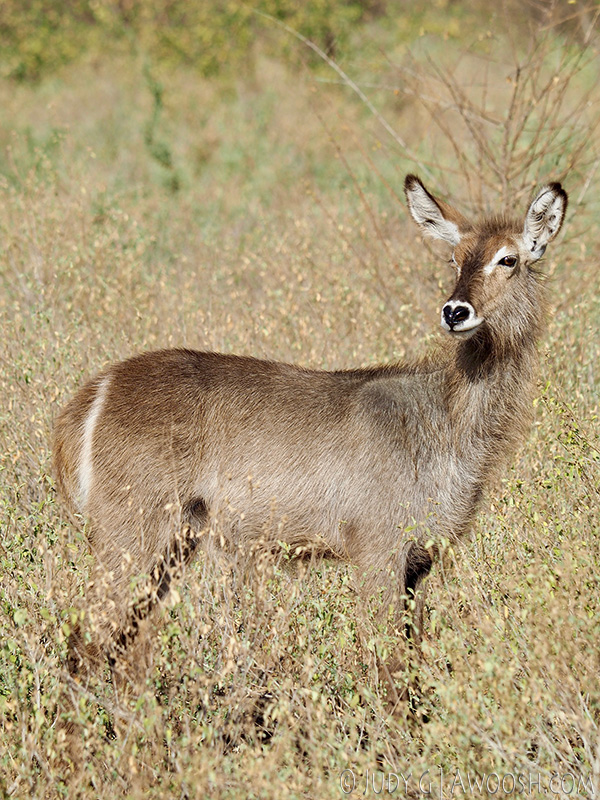
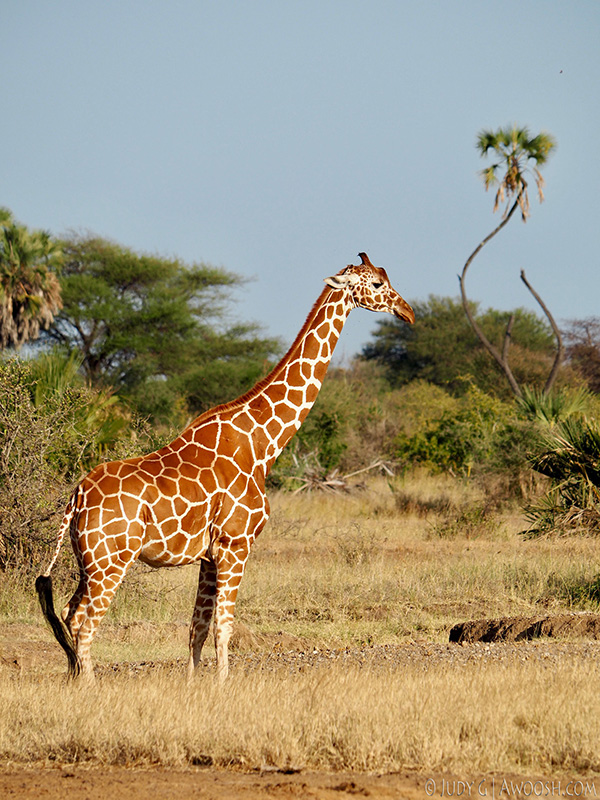
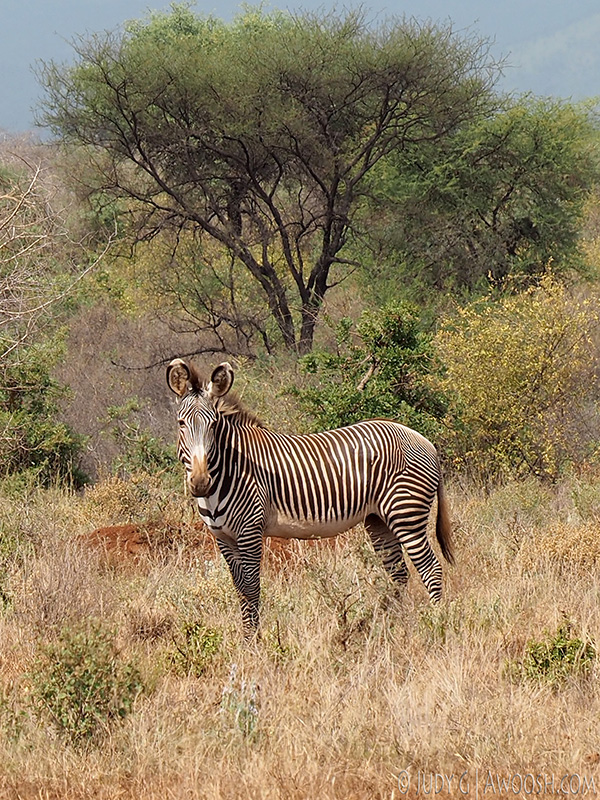
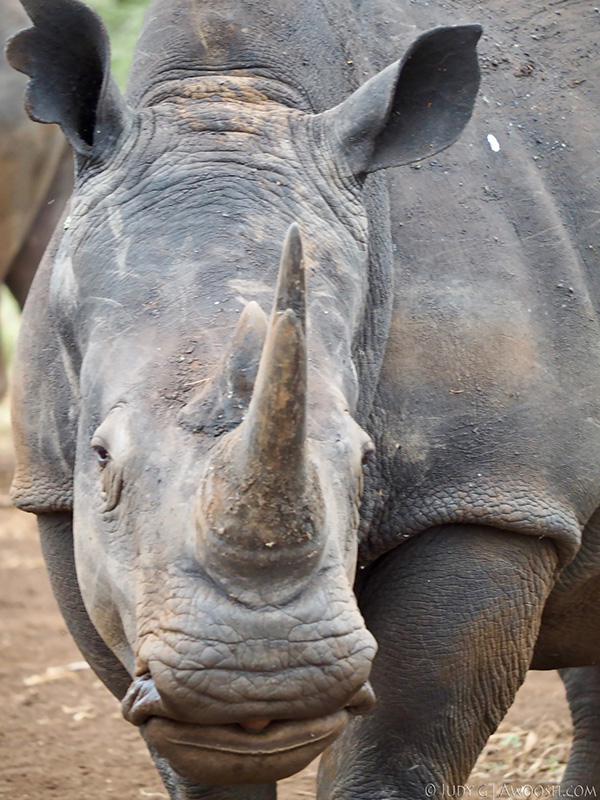
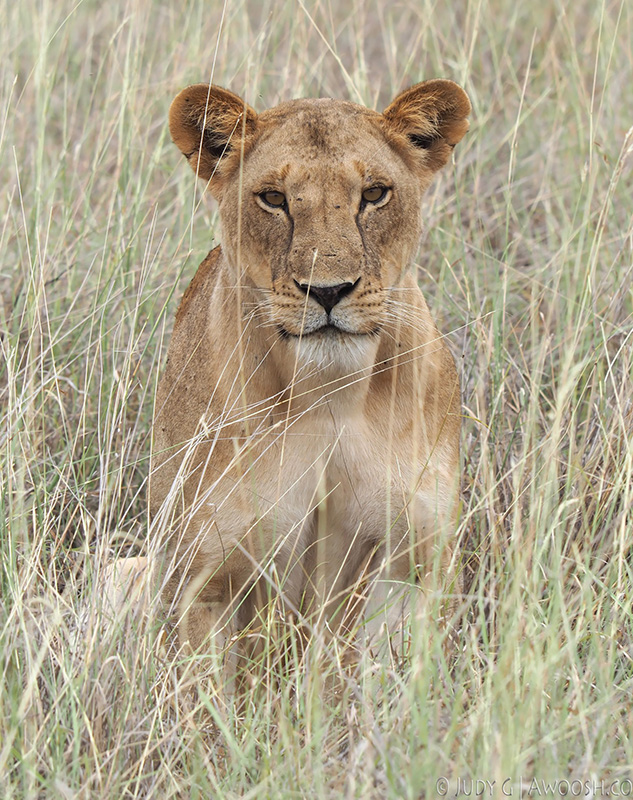
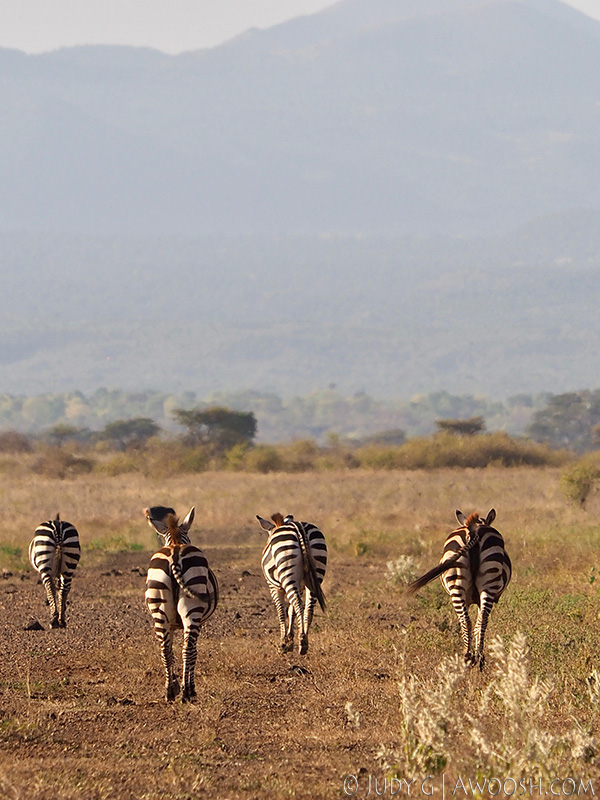
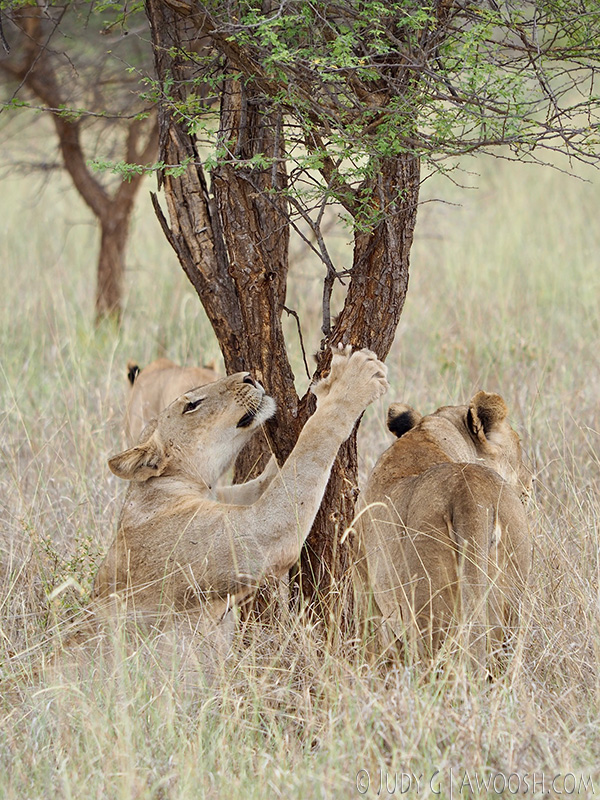
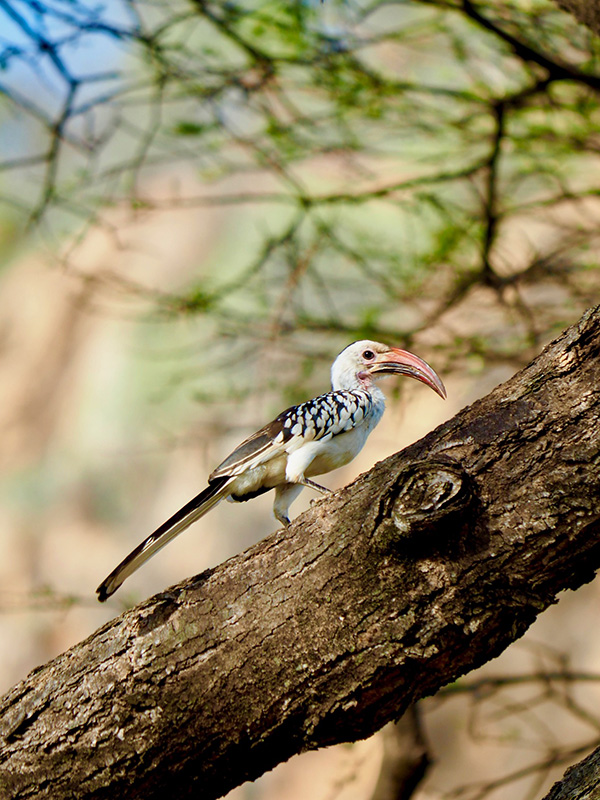
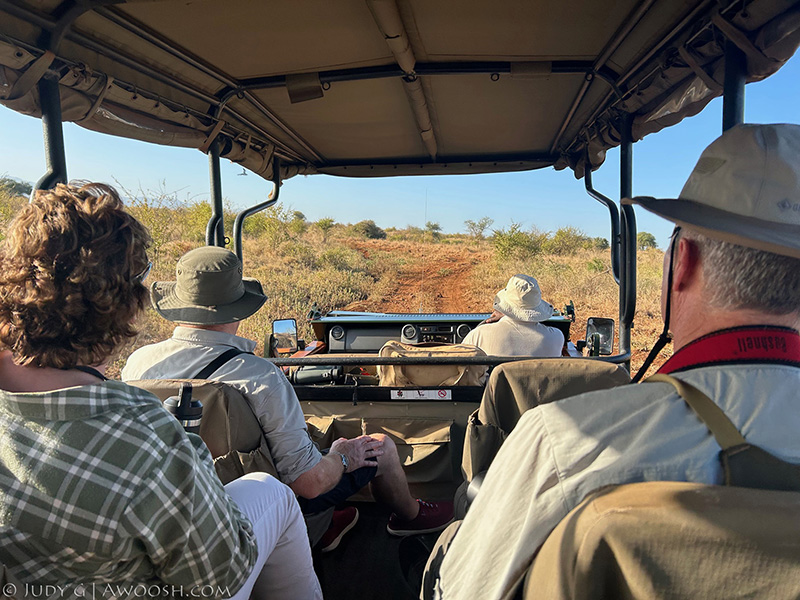
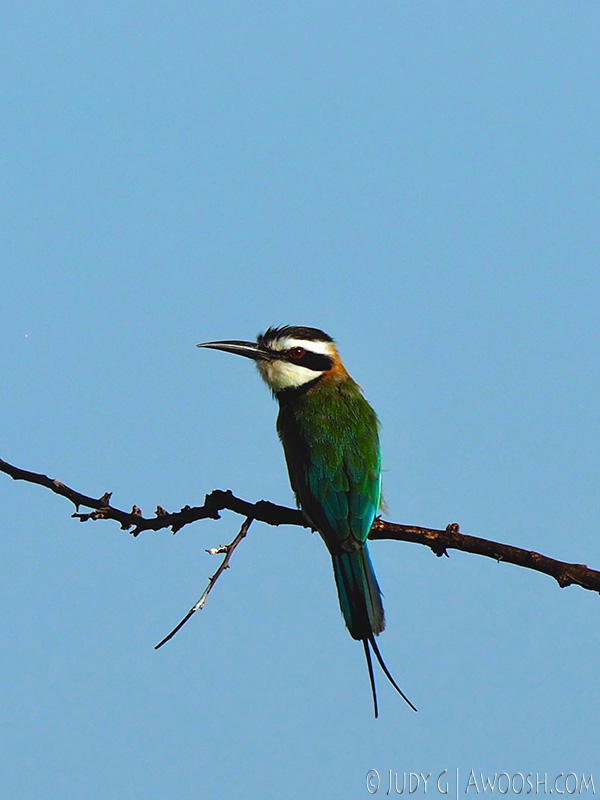
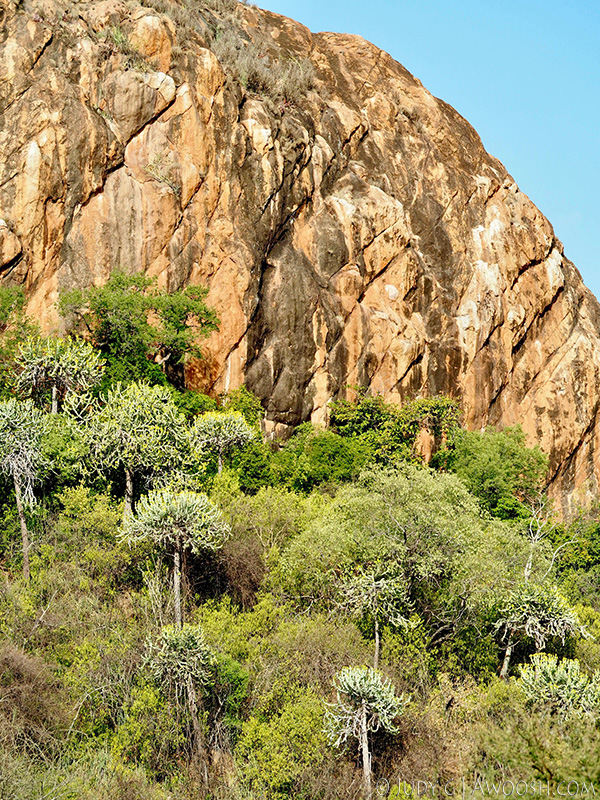
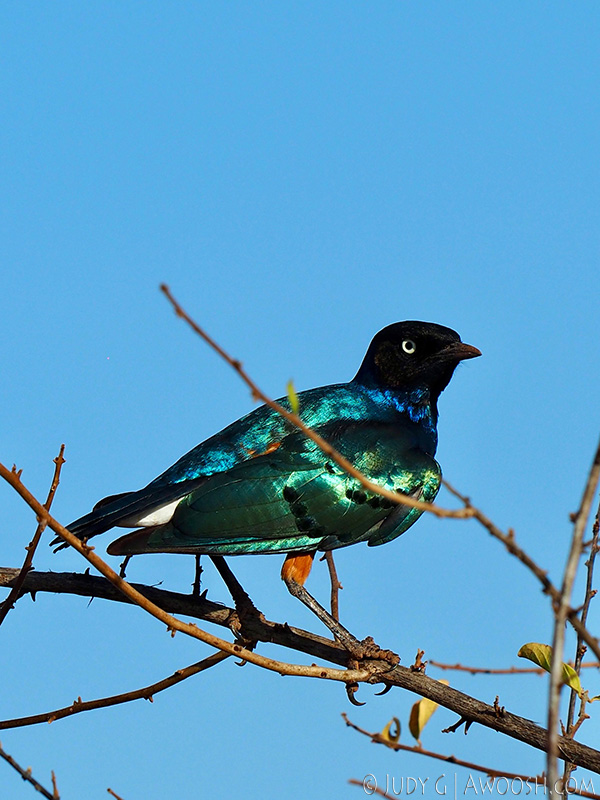
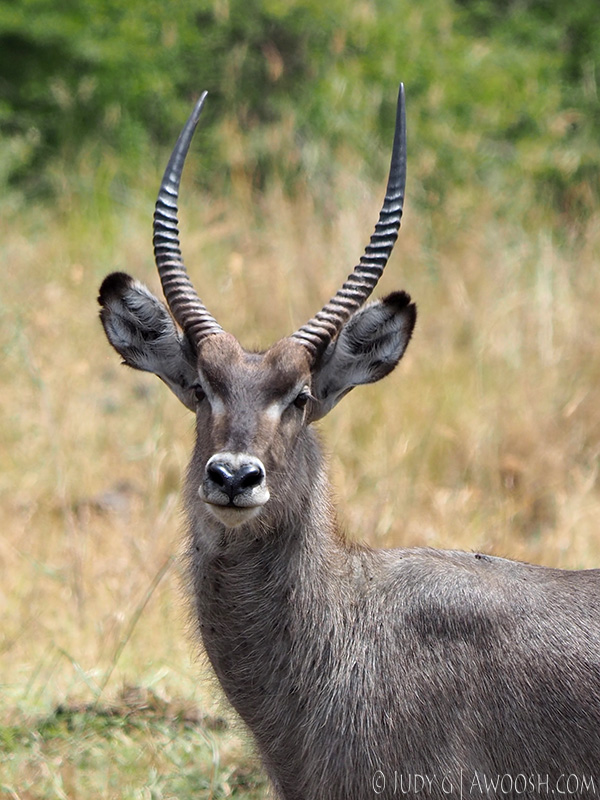
There was a strong ranger presence in the park – we saw their vehicles every day, and it is they who are so important in further preventing the rampant poaching that has decimated many of the wild animal populations in Africa. Apparently it was so bad in the 80’s (Asian lust for rhino horns) that what had previously been an abundant population of these weird critters in the area (something like 10,000 of them!) had been pretty much eradicated, and so the edict became ‘shoot to kill’ any poachers on sight!
Our safari drivers/naturalist guides were Mohammed (Mo) and Joel. Both were wonderfully knowledgeable and clearly knew the park like the back of their hands.
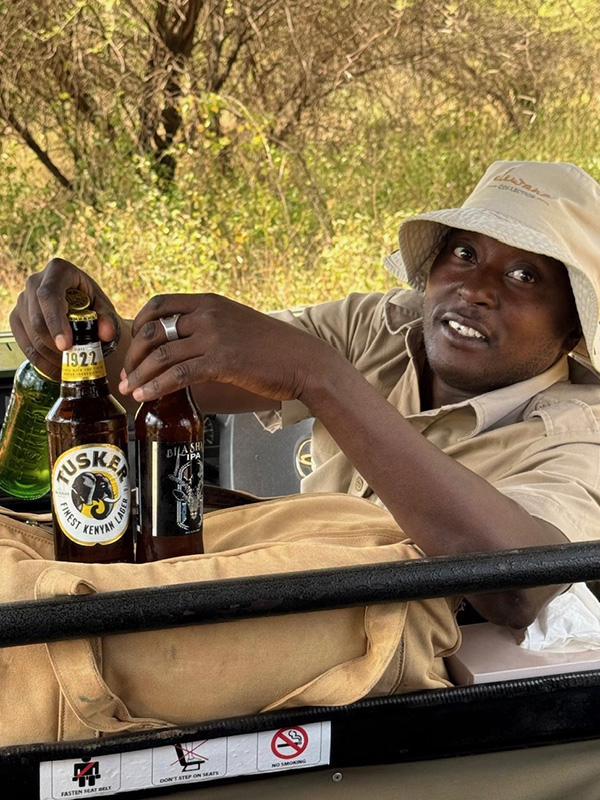
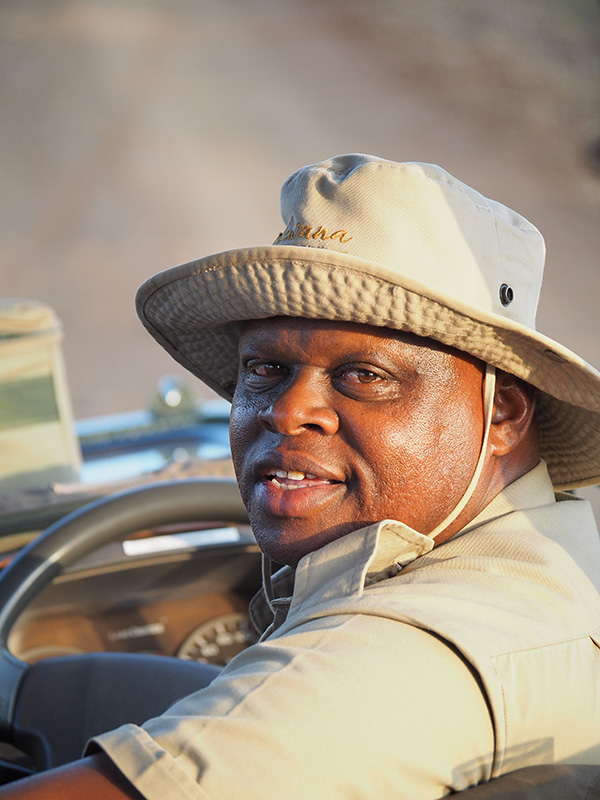
The usual routine was up at dark o’thirty for coffee (delivered to your cottage if preferred), then on the road by 6.30 a.m. We’d stop somewhere for a bush breakfast around 9.30 (coffee, tea, hard boiled or scotch eggs, baked goods, fruit, yogurt). We’d usually be back at the lodge by around 11.30, yummy lunch around 1 pm, siesta, and then out again on safari at 4.30. We’d stop somewhere scenic for sundowner cocktails & snacks on the afternoon drive, just before sunset, and then rip back to the camp on inky corduroy roads in time for a quick shower, beverages, and then a delicious dinner under a blanket of stars. On our last day, we were surprised by a full on sit down hot breakfast out in the bush, set up beside a pretty river. Mimosas! A girl could get used to this ;^). We had very memorable sundowners that afternoon right in the vehicle, as we stopped beside a half dozen lolling lions who clearly had full bellies and were flaked out for the duration. They were just lions just lyin’ around ;^)
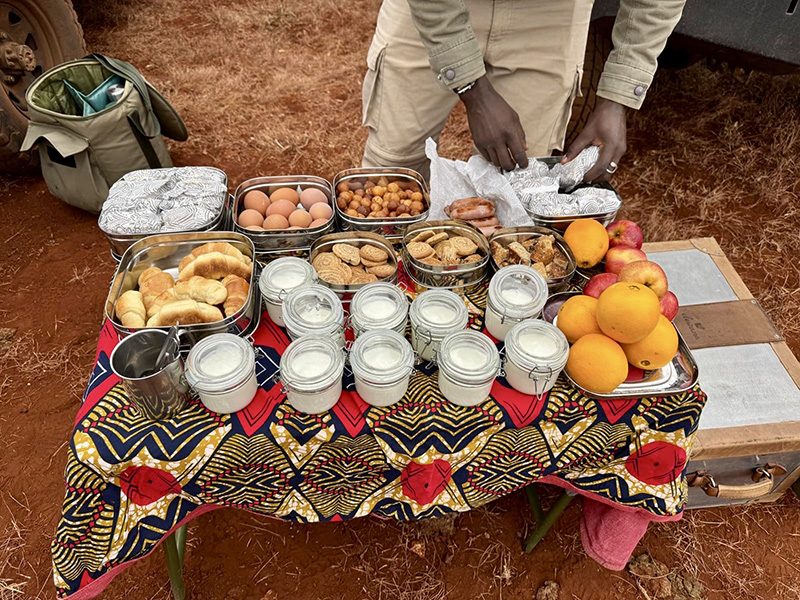
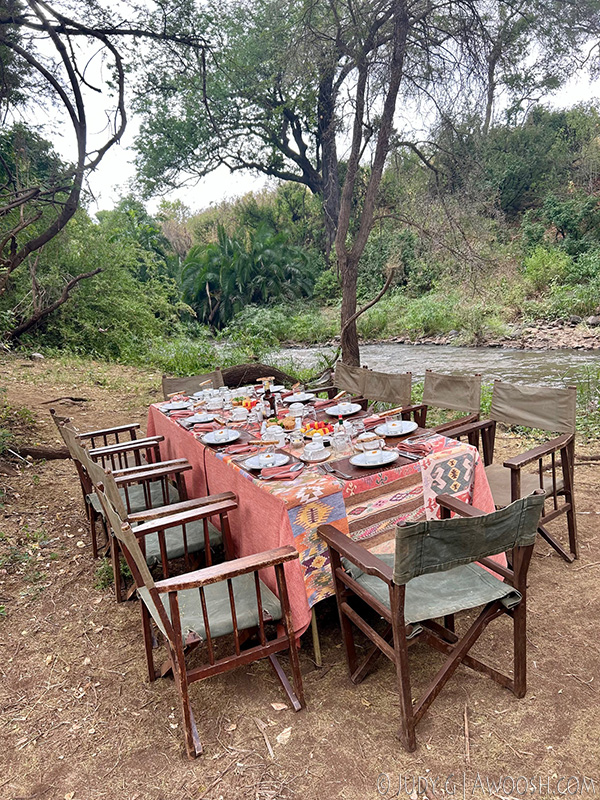
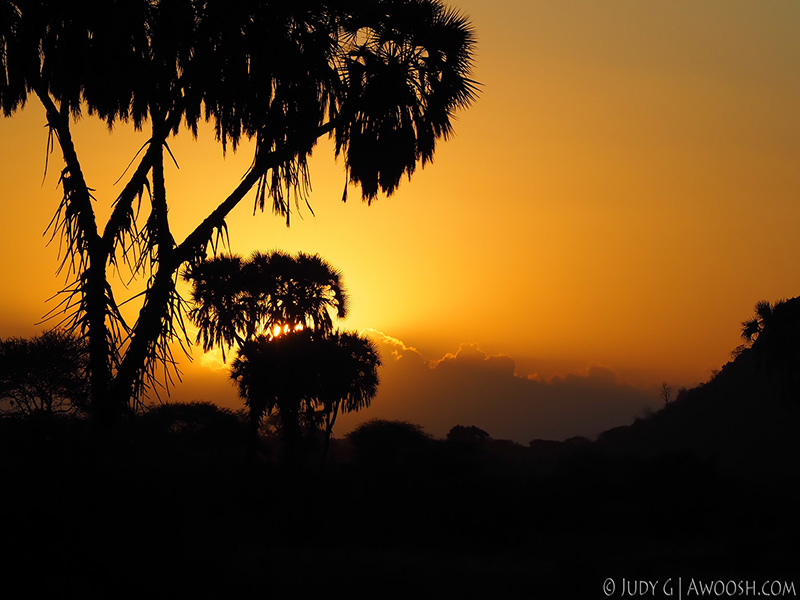
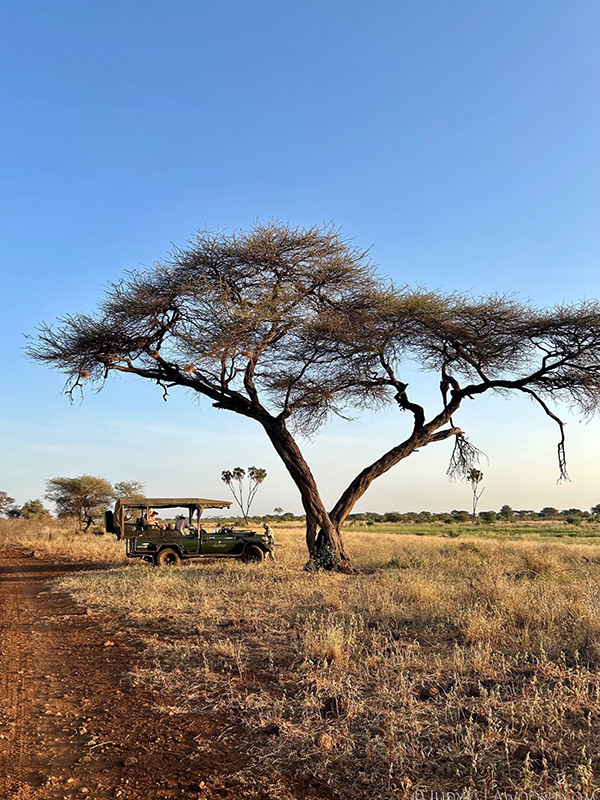
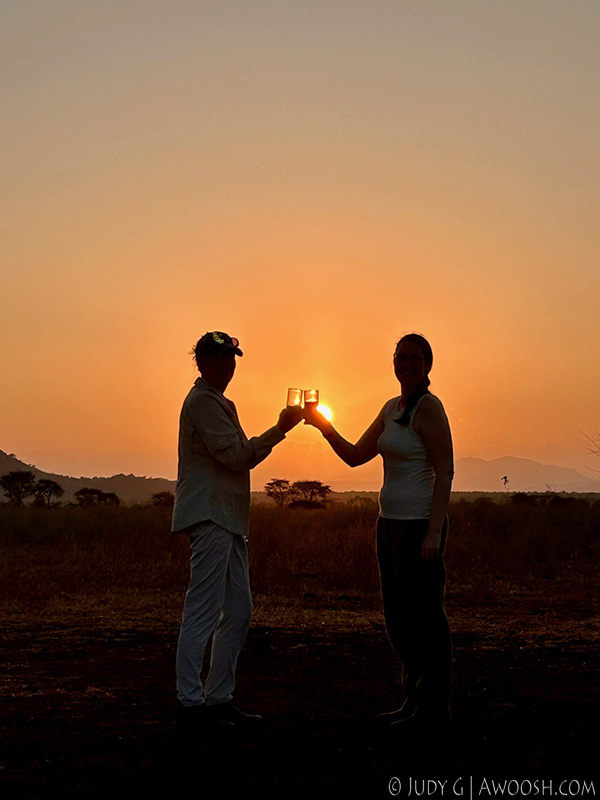
Other observations: they have a nice gift shop in the reception area, and we found the prices and selection were good. The camp is quite spread out, and so the cottages are very private, however, the route from the rooms beyond the reception area to the main lodge (dining area, bar etc) is quite distant, and the camp does have quite a few stairs, so perhaps not ideal for those with significant mobility challenges. We also really enjoyed the spa, which is in a dedicated small building just below the main lodge. Judy was a kind and talented massage therapist, and some muscle release was just the thing after being bounced around in a safari vehicle. The open wall looking out over the plain below made for best view ever from a massage table.
On our final morning at Meru, we were driven to a different airfield than the one we had arrived at, and for some reason they sent two smaller planes for us, and so the group divvied itself up and we flew on an approximately 45 minute flight to the remote Nemanyak area in mid-northern Kenya, where the lovely and inspiring Sarara Camp is located.
Load ’em up…
Click here for Part 3 – Nemunyak Community Conservanacy — Sarara Lodge

